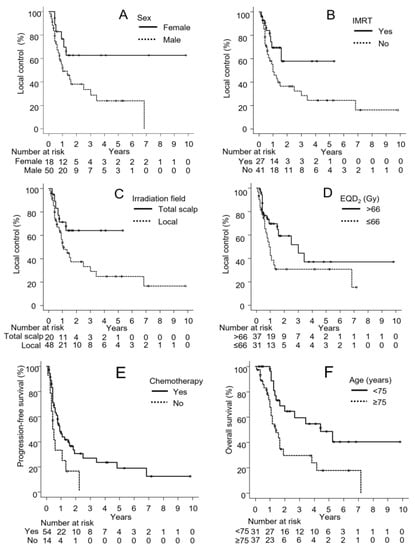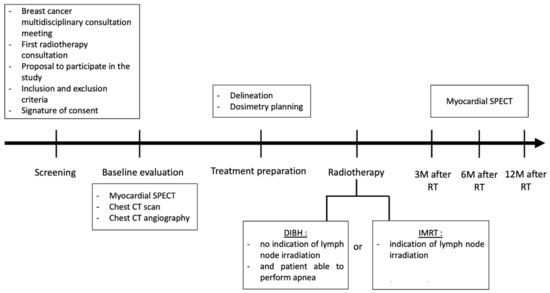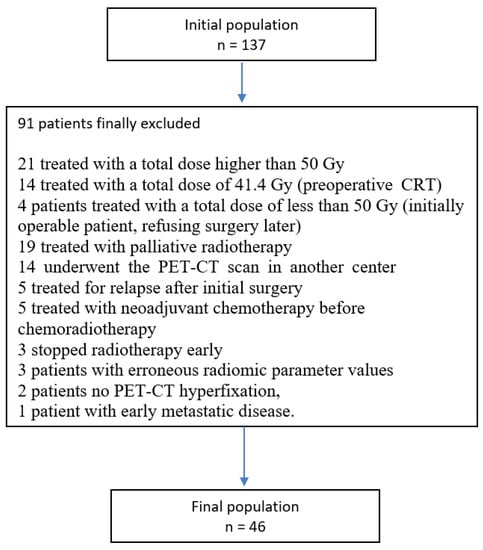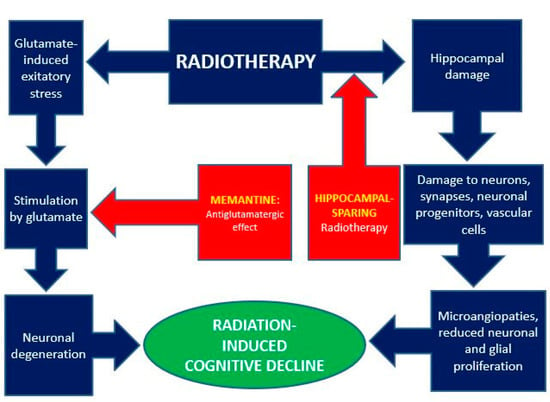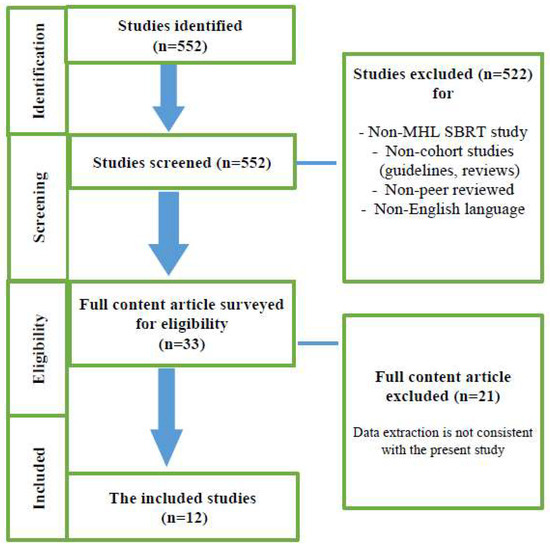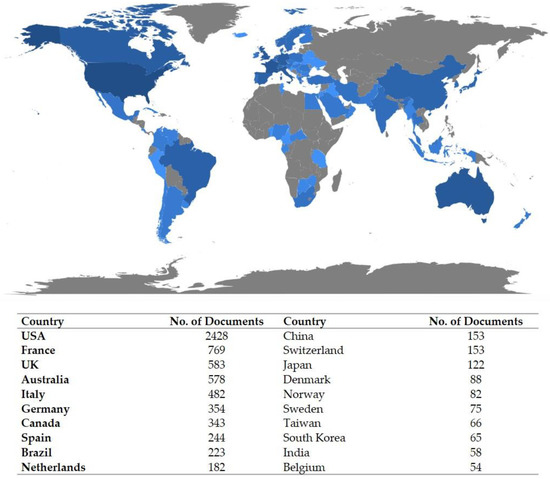Advances in Cancer Radiotherapy
A topical collection in Cancers (ISSN 2072-6694). This collection belongs to the section "Cancer Biomarkers".
Viewed by 22048
Share This Topical Collection
Editors
 Dr. Letizia Deantonio
Dr. Letizia Deantonio
 Dr. Letizia Deantonio
Dr. Letizia Deantonio
E-Mail
Website
Collection Editor
1. Radiation Oncology Clinic, Oncology Institute of Southern Switzerland, 6500 Bellinzona, Switzerland
2. Faculty of Biomedical Sciences, Università della Svizzera Italiana, 6900 Lugano, Switzerland
Interests: prostate cancer; radiotherapy; head and neck cancer; gastrointestinal cancer
Special Issues, Collections and Topics in MDPI journals
 Dr. Pierfrancesco Franco
Dr. Pierfrancesco Franco
 Dr. Pierfrancesco Franco
Dr. Pierfrancesco Franco
E-Mail
Website
Collection Editor
Department of Translational Medicine, University of Eastern Piedmont, 13100 Vercelli, Italy
Interests: breast cancer; gastrointestinal malignancies; head and neck cancer; quality of life; psycho-oncology; cancer education
Special Issues, Collections and Topics in MDPI journals
Topical Collection Information
Dear Colleagues,
Radiation therapy is an essential treatment option for cancer patients, as more than half of them will receive radiation as part of the therapeutic strategy during the course of disease. Technological advances and careful integration with surgery and systemic therapies allow for safe and effective delivery of radiotherapy in different oncological settings. Combination therapy allows for a detectable improvement in clinical outcomes, especially with the combined use of radiotherapy and immunotherapy or target agents. A deeper understanding of radiobiology also allows dissecting the molecular mechanisms underlying the interaction of radiotherapy and cellular mechanisms, tumor microenvironment and the immune system. The introduction of biomarkers allows for a better characterization of patient’s risk, to better tailor the therapeutic management.
Comprehensive cancer care, with a focus on treatment compliance, reduction in the toxicity profile related to treatment, patient’s quality of life and patient’s perspective fosters the role of radiotherapy in the multidisciplinary approach, typically suited to modern clinical oncology.
This collection is aimed at providing an overview of the role of radiotherapy in modern comprehensive and multidisciplinary cancer care.
Dr. Berardino De Bari
Dr. Letizia Deantonio
Dr. Pierfrancesco Franco
Collection Editors
Manuscript Submission Information
Manuscripts should be submitted online at www.mdpi.com by registering and logging in to this website. Once you are registered, click here to go to the submission form. Manuscripts can be submitted until the deadline. All submissions that pass pre-check are peer-reviewed. Accepted papers will be published continuously in the journal (as soon as accepted) and will be listed together on the collection website. Research articles, review articles as well as communications are invited. For planned papers, a title and short abstract (about 100 words) can be sent to the Editorial Office for announcement on this website.
Submitted manuscripts should not have been published previously, nor be under consideration for publication elsewhere (except conference proceedings papers). All manuscripts are thoroughly refereed through a single-blind peer-review process. A guide for authors and other relevant information for submission of manuscripts is available on the Instructions for Authors page. Cancers is an international peer-reviewed open access semimonthly journal published by MDPI.
Please visit the Instructions for Authors page before submitting a manuscript.
The Article Processing Charge (APC) for publication in this open access journal is 2900 CHF (Swiss Francs).
Submitted papers should be well formatted and use good English. Authors may use MDPI's
English editing service prior to publication or during author revisions.
Keywords
- radiotherapy
- combined modality treatment
- immunotherapy
- radiobiology
- biomarkers
- quality of life
- patient Reported Outcomes
- technological advances
- cost-effectiveness
- imaging
Published Papers (7 papers)
Open AccessArticle
Clinical Outcomes of Radiation Therapy for Angiosarcoma of the Scalp and Face: A Multi-Institutional Observational Study
by
Masanari Niwa, Natsuo Tomita, Taiki Takaoka, Hirota Takano, Chiyoko Makita, Masayuki Matsuo, Sou Adachi, Yukihiko Oshima, Shintaro Yamamoto, Mayu Kuno, Akifumi Miyakawa, Dai Okazaki, Akira Torii, Nozomi Kita, Seiya Takano, Motoki Nakamura, Hiroshi Kato, Akimichi Morita and Akio Hiwatashi
Cited by 1 | Viewed by 1752
Abstract
Angiosarcoma of the scalp and face (ASF) is a rare, aggressive tumor often treated with multimodal therapy, including radiation therapy (RT). This study assessed RT outcomes for ASF and identified prognostic factors. Data from 68 non-metastatic ASF patients undergoing RT with or without
[...] Read more.
Angiosarcoma of the scalp and face (ASF) is a rare, aggressive tumor often treated with multimodal therapy, including radiation therapy (RT). This study assessed RT outcomes for ASF and identified prognostic factors. Data from 68 non-metastatic ASF patients undergoing RT with or without other therapies were analyzed. Median radiation dose was 66 Gy in 33 fractions (interquartile range (IQR) 60–70 Gy in 28–35 fractions). Local control (LC), progression-free survival (PFS), and overall survival (OS) rates were calculated using Kaplan–Meier analysis. Multivariate analyses and adverse event evaluation were conducted. Median patient age was 75 years (IQR 71–80 years), with a median follow-up of 17 months (IQR 11–42 months). One-/three-year LC rates were 57/37%, PFS rates were 44/22%, and OS rates were 81/44%. Multivariate analyses showed that an equivalent dose in a 2 Gy fraction (EQD
2) >66 Gy correlated with improved LC (HR 2.35, 95% CI 1.03–5.32,
p = 0.041). Combining chemotherapy (HR 2.43, 95% CI 1.08–5.46,
p = 0.032) or surgery (HR 2.41, 95% CI 1.03–5.59,
p = 0.041) improved PFS. No factors influenced OS. Late grade 3+ toxicities occurred in 1%, with one patient developing a grade 4 skin ulcer. These findings suggest that EQD
2 > 66 Gy and combining chemotherapy or surgery can enhance LC or PFS in ASF. Further prospective studies are needed to determine the optimal treatment strategy for this rare malignancy, particularly in elderly patients.
Full article
►▼
Show Figures
Open AccessStudy Protocol
Efficacity of Deep Inspiration Breath Hold and Intensity-Modulated Radiotherapy in Preventing Perfusion Defect for Left Sided Breast Cancer (EDIPE): A Prospective Cohort Study Protocol
by
Jordan Eber, Cyrille Blondet, Martin Schmitt, David G. Cox, Claire Vit, Clara Le Fèvre, Delphine Antoni, Fabrice Hubele and Georges Noel
Cited by 1 | Viewed by 1684
Abstract
Breast radiotherapy can lead to radiation-induced cardiac disease, particularly in left breast cancers. Recent studies have shown that subclinical cardiac lesions, such as myocardial perfusion deficits, may occur early after radiotherapy. The primary method for irradiating breast cancer, known as opposite tangential field
[...] Read more.
Breast radiotherapy can lead to radiation-induced cardiac disease, particularly in left breast cancers. Recent studies have shown that subclinical cardiac lesions, such as myocardial perfusion deficits, may occur early after radiotherapy. The primary method for irradiating breast cancer, known as opposite tangential field radiotherapy, can cause the anterior interventricular coronary artery to receive a high dose of radiation during left breast irradiation. To explore alternative approaches that could reduce the risk of myocardial perfusion defects in patients with left breast cancer, we plan to conduct a prospective single-center study using a combination of deep inspiration breath hold radiotherapy and intensity modulated radiation therapy. The study will use stress and, if necessary, resting myocardial scintigraphy to assess myocardial perfusion. The trial aims to show that reducing the cardiac dose with these techniques can prevent the appearance of early (3-month) and medium-term (6- and 12-month) perfusion disorders.
Full article
►▼
Show Figures
Open AccessReview
Homologous Recombination Deficiency Scar: Mutations and Beyond—Implications for Precision Oncology
by
Alexander M. A. van der Wiel, Lesley Schuitmaker, Ying Cong, Jan Theys, Arne Van Hoeck, Conchita Vens, Philippe Lambin, Ala Yaromina and Ludwig J. Dubois
Cited by 10 | Viewed by 3378
Abstract
Homologous recombination deficiency (HRD) is a prevalent in approximately 17% of tumors and is associated with enhanced sensitivity to anticancer therapies inducing double-strand DNA breaks. Accurate detection of HRD would therefore allow improved patient selection and outcome of conventional and targeted anticancer therapies.
[...] Read more.
Homologous recombination deficiency (HRD) is a prevalent in approximately 17% of tumors and is associated with enhanced sensitivity to anticancer therapies inducing double-strand DNA breaks. Accurate detection of HRD would therefore allow improved patient selection and outcome of conventional and targeted anticancer therapies. However, current clinical assessment of HRD mainly relies on determining germline
BRCA1/2 mutational status and is insufficient for adequate patient stratification as mechanisms of HRD occurrence extend beyond functional BRCA1/2 loss. HRD, regardless of
BRCA1/2 status, is associated with specific forms of genomic and mutational signatures termed HRD scar. Detection of this HRD scar might therefore be a more reliable biomarker for HRD. This review discusses and compares different methods of assessing HRD and HRD scar, their advances into the clinic, and their potential implications for precision oncology.
Full article
►▼
Show Figures
Open AccessArticle
Could 18-FDG PET-CT Radiomic Features Predict the Locoregional Progression-Free Survival in Inoperable or Unresectable Oesophageal Cancer?
by
Berardino De Bari, Loriane Lefevre, Julie Henriques, Roberto Gatta, Antoine Falcoz, Pierre Mathieu, Christophe Borg, Nicola Dinapoli, Hatem Boulahdour, Luca Boldrini, Vincenzo Valentini and Dewi Vernerey
Cited by 1 | Viewed by 2060
Abstract
Background: We evaluated the value of pre-treatment positron-emission tomography–computed tomography (PET-CT)-based radiomic features in predicting the locoregional progression-free survival (LR-PFS) of patients with inoperable or unresectable oesophageal cancer. Material and Methods: Forty-six patients were included and 230 radiomic parameters were extracted. After a
[...] Read more.
Background: We evaluated the value of pre-treatment positron-emission tomography–computed tomography (PET-CT)-based radiomic features in predicting the locoregional progression-free survival (LR-PFS) of patients with inoperable or unresectable oesophageal cancer. Material and Methods: Forty-six patients were included and 230 radiomic parameters were extracted. After a principal component analysis (PCA), we identified the more robust radiomic parameters, and we used them to develop a heatmap. Finally, we correlated these radiomic features with LR-PFS. Results: The median follow-up time was 17 months. The two-year LR-PFS and PFS rates were 35.9% (95% CI: 18.9–53.3) and 21.6% (95%CI: 10.0–36.2), respectively. After the correlation analysis, we identified 55 radiomic parameters that were included in the heatmap. According to the results of the hierarchical clustering, we identified two groups of patients presenting statistically different median LR-PFSs (22.8 months vs. 9.9 months; HR = 2.64; 95% CI 0.97–7.15;
p = 0.0573). We also identified two radiomic features (“F_rlm_rl_entr_per” and “F_rlm_2_5D_rl_entr”) significantly associated with LR-PFS. Patients expressing a “F_rlm_2_5D_rl_entr” of <3.3 had a better median LR- PFS (29.4 months vs. 8.2 months;
p = 0.0343). Patients presenting a “F_rlm_rl_entr_per” of <4.7 had a better median LR-PFS (50.4 months vs. 9.9 months;
p = 0.0132). Conclusion: We identified two radiomic signatures associated with a lower risk of locoregional relapse after CRT.
Full article
►▼
Show Figures
Open AccessReview
Memantine in the Prevention of Radiation-Induced Brain Damage: A Narrative Review
by
Claudia Scampoli, Silvia Cammelli, Erika Galietta, Giambattista Siepe, Milly Buwenge, Gabriella Macchia, Francesco Deodato, Savino Cilla, Lidia Strigari, Silvia Chiesa and Alessio Giuseppe Morganti
Cited by 5 | Viewed by 4368
Abstract
Preserving cognitive functions is a priority for most patients with brain metastases. Knowing the mechanisms of hyperglutamatergic neurotoxicity and the role of some hippocampal areas in cognitive decline (CD) led to testing both the antiglutamatergic pharmacological prophylaxis and hippocampal-sparing whole-brain radiotherapy (WBRT) techniques.
[...] Read more.
Preserving cognitive functions is a priority for most patients with brain metastases. Knowing the mechanisms of hyperglutamatergic neurotoxicity and the role of some hippocampal areas in cognitive decline (CD) led to testing both the antiglutamatergic pharmacological prophylaxis and hippocampal-sparing whole-brain radiotherapy (WBRT) techniques. These studies showed a relative reduction in CD four to six months after WBRT. However, the failure to achieve statistical significance in one study that tested memantine alone (RTOG 0614) led to widespread skepticism about this drug in the WBRT setting. Moreover, interest grew in the reasons for the strong patient dropout rates in the first few months after WBRT and for early CD onset. In fact, the latter can only partially be explained by subclinical tumor progression. An emerging interpretation of the (not only) cognitive impairment during and immediately after WBRT is the dysfunction of the limbic and hypothalamic system with its immune and hormonal consequences. This new understanding of WBRT-induced toxicity may represent the basis for further innovative trials. These studies should aim to: (i) evaluate in greater detail the cognitive effects and, more generally, the quality of life impairment during and immediately after WBRT; (ii) study the mechanisms producing these early effects; (iii) test in clinical studies, the modern and advanced WBRT techniques based on both hippocampal-sparing and hypothalamic-pituitary-sparing, currently evaluated only in planning studies; (iv) test new timings of antiglutamatergic drugs administration aimed at preventing not only late toxicity but also acute effects.
Full article
►▼
Show Figures
Open AccessReview
Stereotactic Body Radiation Therapy (SBRT) for Oligorecurrent/Oligoprogressive Mediastinal and Hilar Lymph Node Metastasis: A Systematic Review
by
Salvatore Cozzi, Emanuele Alì, Lilia Bardoscia, Masoumeh Najafi, Andrea Botti, Gladys Blandino, Lucia Giaccherini, Maria Paola Ruggieri, Matteo Augugliaro, Federico Iori, Angela Sardaro, Cinzia Iotti and Patrizia Ciammella
Cited by 9 | Viewed by 4050
Abstract
Introduction: Mediastinal or hilar lymph node metastases are a challenging condition in patients affected by solid tumors. Stereotactic body radiation therapy (SBRT) could play a crucial role in the therapeutic management and in the so-called “no-fly zone”, delivering high doses of radiation in
[...] Read more.
Introduction: Mediastinal or hilar lymph node metastases are a challenging condition in patients affected by solid tumors. Stereotactic body radiation therapy (SBRT) could play a crucial role in the therapeutic management and in the so-called “no-fly zone”, delivering high doses of radiation in relatively few treatment fractions with excellent sparing of healthy surrounding tissues and low toxicity. The aim of this systematic review is to evaluate the feasibility and tolerability of SBRT in the treatment of mediastinal and hilar lesions with particular regard to the radiotherapy doses, dose constraints for organs at risk, and clinical outcomes. Materials and methods: Two blinded investigators performed a critical review of the Medline, Web of Knowledge, Google Scholar, Scopus, and Cochrane databases according to the Preferred Reporting Items for Systematic Reviews and Meta-Analyses statement (PRISMA), starting from a specific question: What is the clinical impact of SBRT for the treatment of oligorecurrent/oligoprogressive mediastinal and hilar metastasis? All retrospective and prospective clinical trials published in English up to February 2022 were analyzed. Results: A total of 552 articles were identified and 12 of them were selected with a total number of 478 patients treated with SBRT for mediastinal or hilar node recurrence. All the studies are retrospective, published between 2015 and 2021 with a median follow-up ranging from 12 to 42.2 months. Studies following SBRT for lung lesions or retreatments after thorax radiotherapy for stage III lung cancer were also included. The studies showed extensive heterogeneity in terms of patient and treatment characteristics. Non-small cell lung cancer was the most frequently reported histology. Different dose schemes were used, with a higher prevalence of 4–8 Gy in 5 or 6 fractions, but dose escalation was also used up to 52 Gy in 4 fractions with dose constraints mainly derived from RTOG 0813 trial. The radiotherapy technique most frequently used was volumetric modulated arc therapy (VMAT) with a median PTV volume ranging from 7 to 25.7 cc. The clinical outcome seems to be very encouraging with 1-year local control (LC), overall survival (OS) and progression-free survival (PFS) rates ranging from 84 to 94%, 53 to 88% and 23 to 53.9%, respectively. Half of the studies did not report toxicity greater than G3 and only five cases of fatal toxicity were reported. CONCLUSIONS: From the present review, it is not possible to draw definitive conclusions because of the heterogeneity of the studies analyzed. However, SBRT appears to be a safe and effective option in the treatment of mediastinal and hilar lymph node recurrence, with a good toxicity profile. Its use in clinical practice is still limited, and there is extensive heterogeneity in patient selection and fractionation schedules. Good performance status, small PTV volume, absence of previous thoracic irradiation, and administration of a high biologically effective dose (BED) seem to be factors that correlate with greater local control and better survival rates. In the presence of symptoms related to the thoracic lymph nodes, SBRT determines a rapid control that lasts over time. We look forward to the prospective studies that are underway for definitive conclusions.
Full article
►▼
Show Figures
Open AccessArticle
A Machine-Learning-Based Bibliometric Analysis of the Scientific Literature on Anal Cancer
by
Pierfrancesco Franco, Eva Segelov, Anders Johnsson, Rachel Riechelmann, Marianne G. Guren, Prajnan Das, Sheela Rao, Dirk Arnold, Karen-Lise Garm Spindler, Eric Deutsch, Marco Krengli, Vincenzo Tombolini, David Sebag-Montefiore and Francesca De Felice
Cited by 9 | Viewed by 3628
Abstract
Squamous-cell carcinoma of the anus (ASCC) is a rare disease. Barriers have been encountered to conduct clinical and translational research in this setting. Despite this, ASCC has been a prime example of collaboration amongst researchers. We performed a bibliometric analysis of ASCC-related literature
[...] Read more.
Squamous-cell carcinoma of the anus (ASCC) is a rare disease. Barriers have been encountered to conduct clinical and translational research in this setting. Despite this, ASCC has been a prime example of collaboration amongst researchers. We performed a bibliometric analysis of ASCC-related literature of the last 20 years, exploring common patterns in research, tracking collaboration and identifying gaps. The electronic Scopus database was searched using the keywords “anal cancer”, to include manuscripts published in English, between 2000 and 2020. Data analysis was performed using R-Studio 0.98.1091 software. A machine-learning bibliometric method was applied. The bibliometrix R package was used. A total of 2322 scientific documents was found. The average annual growth rate in publication was around 40% during 2000–2020. The five most productive countries were United States of America (USA), United Kingdom (UK), France, Italy and Australia. The USA and UK had the greatest link strength of international collaboration (22.6% and 19.0%). Two main clusters of keywords for published research were identified: (a) prevention and screening and (b) overall management. Emerging topics included imaging, biomarkers and patient-reported outcomes. Further efforts are required to increase collaboration and funding to sustain future research in the setting of ASCC.
Full article
►▼
Show Figures







